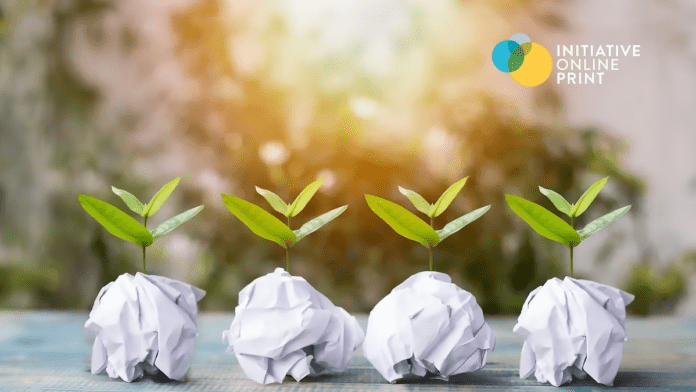Paper has an excellent recycling rate. What’s more, the paper industry also contributes to the growth of European forests, produces hardly any emissions and is the largest producer of renewable energy. You don’t believe it? The Initiative Online Print has compiled the facts.
Print is often portrayed as unsustainable in the public eye, which is why the Initiative Online Print (IOP) sees it as its task to further educate and let the facts speak for themselves. After all, the idea that paper is harmful to the environment is still widespread in society.
In a survey by TwoSides, a non-profit global initiative promoting the sustainable features of print, paper and paper packaging, it was found that 39% of European consumers believe that paper is a wasteful product while 37% thought that paper and paper packaging is bad for the environment.
When comparing 2021 to 2023, the number of consumers who are aware that the European forest area is increasing and not decreasing has only increased by 5% to 15%. Current figures show that European forests are growing by an area equivalent to 1,500 soccer pitches every day. The fact is that the total volume of European forests today is around 28 billion m³ and is growing by about 612 million m³ every year. Moreover, there are other points where public perception does not correspond to reality.
Paper is the world recycling champion
Many consumers still assume that paper is a disposable product. Only 18% of European consumers know that paper has a high recycling rate – just 2% more than in 2021. In fact, it is one of the highest recycled products in the world. 56% of the fiber raw material used in the paper industry across Europe already comes from recycled paper. With a paper recycling rate of 71%, Europe is even the world leader.
Hardly any emissions and generation of renewable energies
Another important aspect is emissions. The paper, pulp and printing sector causes only 0.8% of total European greenhouse gas emissions. Compared to the non-metallic minerals industry (5.6%) and the basic metals industry (4.8%), this figure is very low. What’s more, the European pulp and paper industry is the largest producer of renewable energy, and 62% of its energy consumption is already covered by renewable energy. The paper industry is also benefiting from technological progress: its carbon dioxide emissions fell by 48% per tonne between 1990 and 2019.
Bernd Zipper, chairman of the IOP, draws an interesting comparison: “To put these figures into perspective: A European uses an average of 119kg of paper per year, which corresponds to CO2 emissions of around 73kg. After about 73 wash loads at 60 degrees with a modern washing machine, you will have used up the same amount of CO2.”
Raw materials
Of course, paper production requires water. However, 93% of the water used in the European paper industry is recycled after it has been collected and naturally treated within the factory. It is also interesting to note that average water consumption has fallen significantly since the 1990s, namely by 40% per tonne of paper.
The paper industry also uses recognised forestry certification systems to ensure that virgin fibres come from sustainable sources and that forests are managed sustainably. Our forests are also growing thanks to paper, and that’s a good thing!















